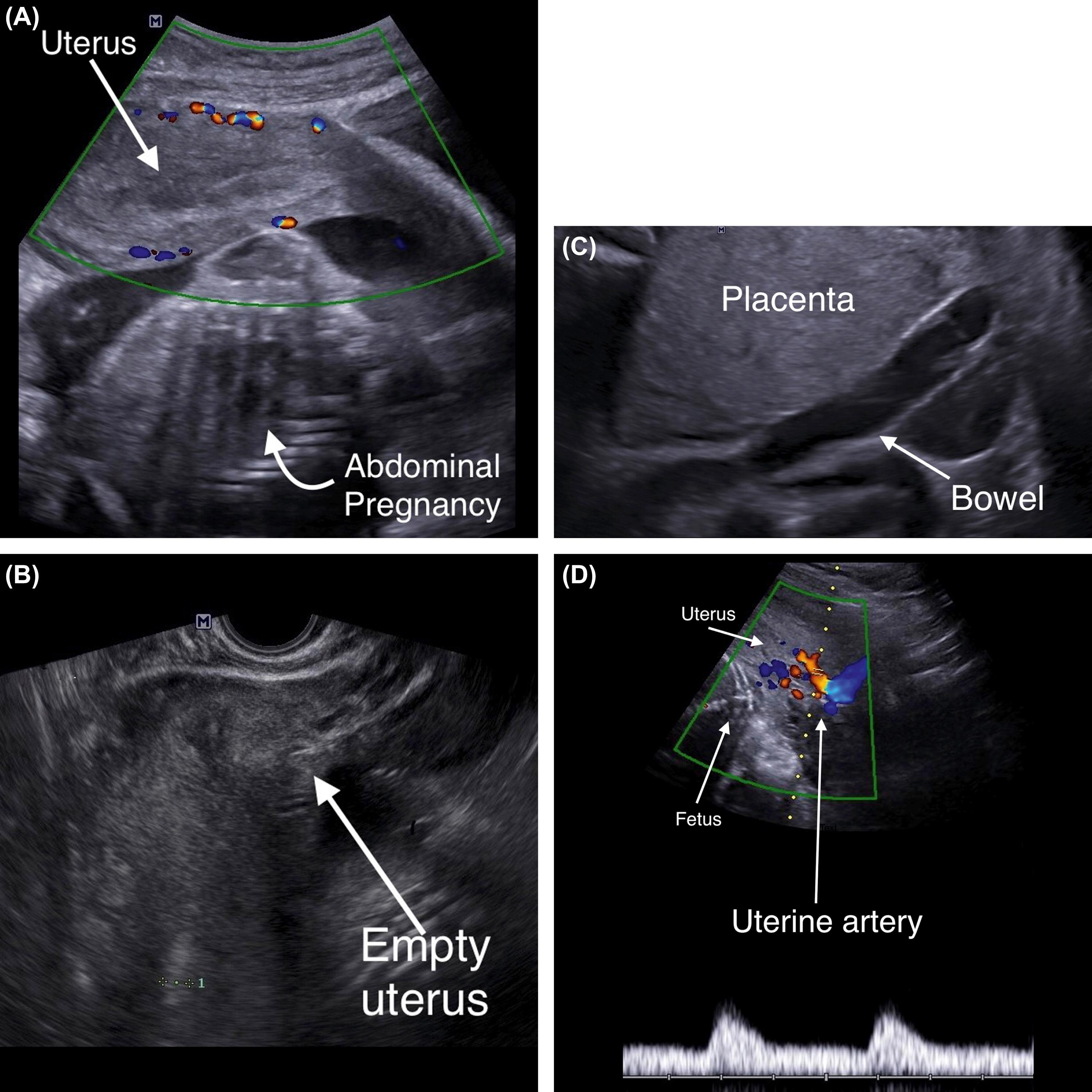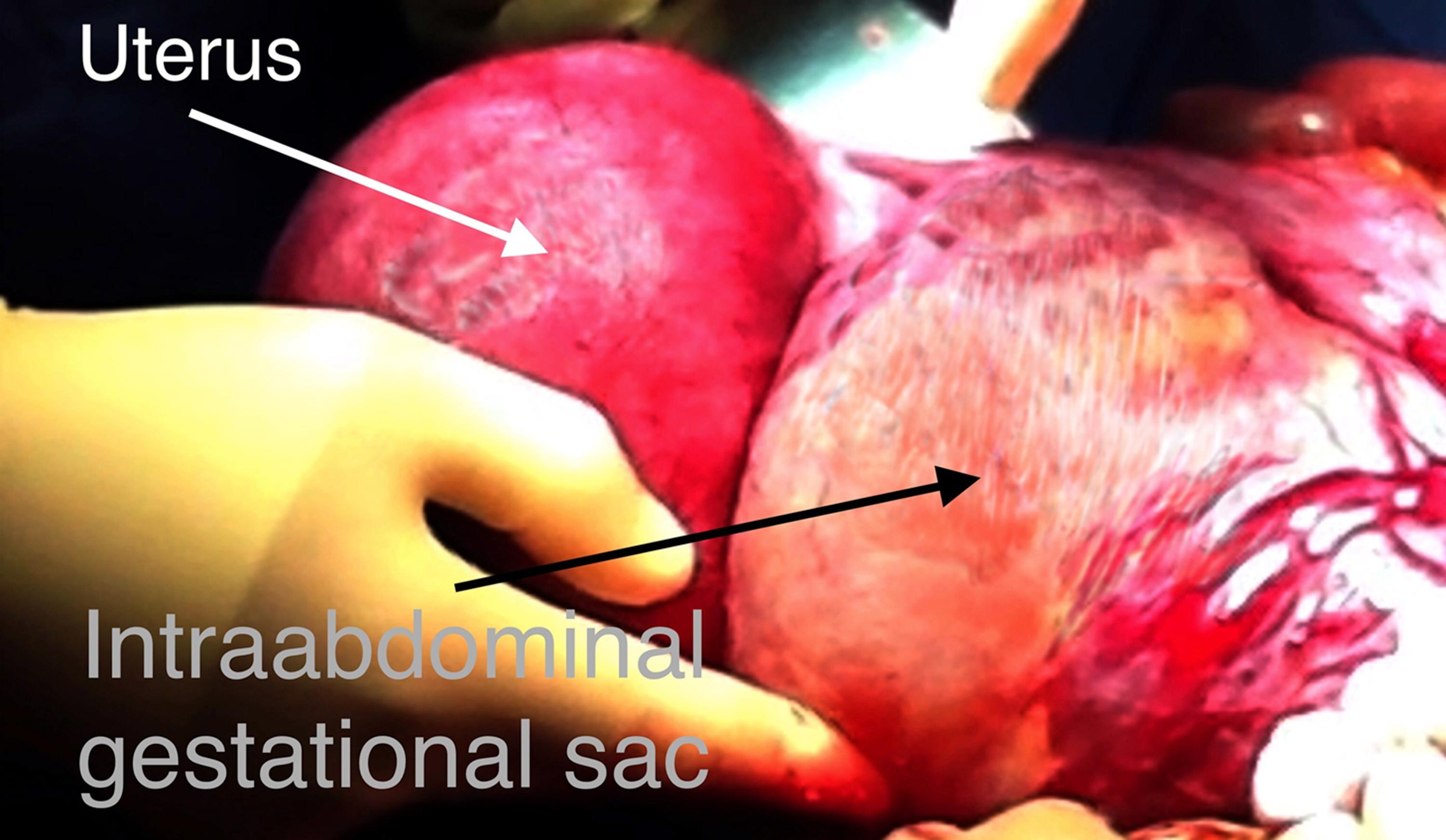Physical Address
304 North Cardinal St.
Dorchester Center, MA 02124
List key specialties to include in interdisciplinary planning of complex surgical cases.
Describe clinical and sonographic findings of abdominal pregnancy.
Describe sonographic findings of cesarean scar pregnancy.
Develop interdisciplinary plan for management of complex surgical cases.
There are times when a pregnancy implants in abnormal locations and develops to an advanced gestational age. Under certain circumstances, these pregnancies can result in delivery of a healthy infant. However, the safety of both the mother and the infant relies heavily on preoperative planning and an interdisciplinary approach. In this chapter, we review important considerations for interdisciplinary planning of these difficult cases. We report complex cases managed at our institution that resulted in positive outcomes for both the mother and the fetus.
Preoperative discussion should include representatives from many specialties, which depending on the clinical scenario may include the following steps:
Obstetrics and Gynecology
Maternal–fetal medicine
Anesthesia
General surgery
Vascular surgery
Urology
Critical care
Interventional radiology
Neonatology
Nursing
Timing of delivery (and if premature, should betamethasone and magnesium sulfate be administered?)
Location of delivery
Is your institution appropriate for maternal and neonatal needs? If not, consider referral to tertiary care center
Within your institution, is patient better served in main operating room or labor and delivery unit?
Preoperative imaging needed
Preferred vascular access
Anticipated operative approach
Anticipated blood product needs
Special equipment needs
Anticipated postoperative needs
It is important to have an open and honest discussion with patient and her family about the risks to both her and the baby of the given condition
Allow multiple opportunities for patient and family to ask questions, as their understanding of the condition will likely evolve over time
On the day of the surgery, designate someone to keep the patient's family updated so the surgical team can focus on their primary responsibilities in the operating room
A patient presented to our institution at 27 weeks gestation because of a suspicion for an abnormal pregnancy. On ultrasound, the fetus was noted to be developing outside of the uterine cavity ( Fig. 29.1A–D ). Diagnosis of abdominal pregnancy was made. An interdisciplinary meeting was held that involved maternal–fetal medicine, vascular surgery, general surgery, anesthesia, and neonatology. Given the concern for unpredictable, catastrophic maternal hemorrhage, the decision was made to proceed with delivery after administration of antenatal steroids. At surgery, a midline incision was made. The gestational sac was noted to be intact, posterior to the uterus ( Fig. 29.2 ). The membranes were ruptured, and the infant was delivered without difficulty. The vascular surgeon then identified and ligated the maternal vessels that extended from the sigmoid colon to the placenta. The placenta was attached to the right adnexa, cul-de-sac, and sigmoid colon. The placenta was removed intact. Excellent hemostasis was obtained. Both the mother and the infant were discharged home in good condition.


A second case had occurred 5 years earlier at our institution. The pregnancy was at 35 weeks' gestation. There was no prenatal care. At cesarean delivery, the placenta was found to be implanted on the omentum. It was removed and both mother and infant did well.
These two cases emphasize that an abdominal pregnancy may end with alive and healthy babies.
Inability to induce labor
Abdominal pain, particularly with fetal movements
Easy abdominal palpation of fetal parts
Lack of myometrial wall between gestational sac and bladder
Suspected bicornuate uterus without myometrium surrounding the fetus
MRI can be useful to help clarify ultrasound findings
Become a Clinical Tree membership for Full access and enjoy Unlimited articles
If you are a member. Log in here